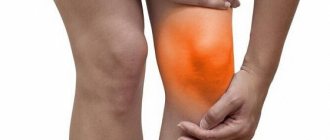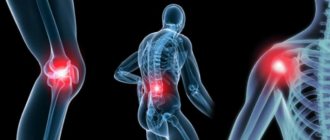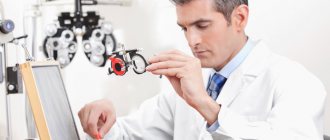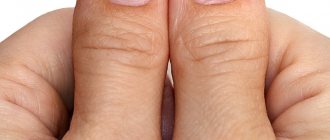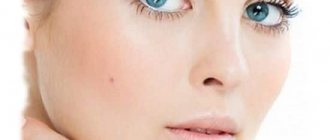Types of hyperhidrosis
Hyperhidrosis is divided into primary and secondary, generalized and local.
- Generalized (generalized) hyperhidrosis. Manifested by increased sweating of the entire surface of the body.
- Local hyperhidrosis. It can appear on any part of the body, but most often in the armpits, palms and soles, face i Batyrshina S.V. Hyperhidrosis: method of correction / S.V. Batyrshina, L.A. Khaertdinova // Practical medicine. -2014. — No. 8 (84). — P. 16-23. .
- Primary (essential) hyperhidrosis. Appears for unknown reasons or spontaneously. In patients with primary hyperhidrosis, both an increase in the number of sweat glands and an increase in their reactivity to ordinary stimuli were noted. Typically, this variant of hyperhidrosis manifests itself from childhood, sharply intensifying during puberty. About 40% of patients note the presence of hyperhidrosis in one of the parents i Batyrshina S.V. Hyperhidrosis: method of correction / S.V. Batyrshina, L.A. Khaertdinova // Practical medicine. -2014. — No. 8 (84). — P. 16-23. .
- Secondary hyperhidrosis. Develops in various diseases and conditions (pathological and normal). Usually of a generalized nature.
Symptoms and consequences
The disease has symptoms of varying severity. There are several levels of severity. At level 1, sweating does not interfere with human activity; it is invisible. At level 2, hyperhidrosis may interfere with daily life, but the disease is tolerable. At level 3, the problem causes significant inconvenience. At level 4, excessive sweating interferes with a person's ability to carry out daily activities.
In severe cases, the following symptoms are observed:
- swelling;
- pain;
- redness;
- constant cooling of the body due to evaporation of fluid;
- psychosomatics – problems in society, anxiety, rapid heartbeat.
Symptoms are aggravated by stressful situations, strong emotionality, warm seasons, body heat, as well as the consumption of chocolate products, coffee and certain spices.
Many people experience seasonal increased sweating in the spring and summer. Constant manifestations are rare - sweating occurs regardless of the weather and is not associated with activity or stress. Relapses may occur when, after hyperhidrosis, the work of the sweat glands returns to normal, and then increased sweating returns. This is usually due to hormone surges and disruptions in the functioning of the autonomic nervous system.
In most cases, the cause of the disease is not known; the pathology can be caused by high activity of the reflexes responsible for sweating. Hyperhidrosis of the armpits and palms is typical for people under 25 years of age and appears for no reason. Genetics matters; in more than 40% of cases there is a history of the disease.
How to properly treat hyperhidrosis?
How to deal with the problem and how to cure it forever - this worries people who are faced with the disease. Can hyperhidrosis be cured? It is possible, but it will take a lot of effort.
It is important to consider the reasons for successfully getting rid of the problem. Sometimes hyperhidrosis is inherited. Currently, various methods are used to treat sweating and the unpleasant odor that accompanies it.
The first recommendation is to regularly wash problem areas. In case of excessive sweating of the feet, in most cases, washing them with cool water twice a day is sufficient. How to get rid of excessive sweating under the arms, chest and back? Shower more often. This is especially true in hot weather.
If hygiene methods are not effective, you need to use special antiperspirants. If special means do not help, you need to know which doctor to see. It is necessary to find out the reasons and get tested.
If sweating was normal before, and then excessive sweating develops, hyperhidrosis may be suspected. If the causes of the problem cannot be determined, you can resort to iontophoresis, surgery, or inject Botox.
Reason #7: Pregnancy
During the first trimester of pregnancy, the body is just “adapting” to the changed hormonal levels, and this may be accompanied by excessive sweating. But in the second and third trimesters, the volume of circulating blood steadily increases (by 30–40%), which, rushing to the skin, can also cause sweating, although not as strong.
What to do : This is a completely safe phenomenon and does not require treatment. Regular hygiene procedures are sufficient. We can recommend a very simple but effective remedy: add one tablespoon of 9% vinegar and salt to 0.5 liters of cold boiled water. Stir and wipe sweaty areas. Store the prepared solution in the refrigerator.
At the doctor
Many people ask which doctor treats hyperhidrosis. First you need to see a therapist, you may also need to consult the following specialists:
- dermatologist - to exclude dermatosis and inflammation of the sweat glands;
- neurologist - to check for autonomic disorders;
- endocrinologist - to assess the functioning of the thyroid gland, check hormone levels and exclude diabetes;
- cardiologist - to check for the absence of angina pectoris;
- orthopedist – often sweating feet is associated with flat feet.
Only a qualified specialist can determine the diseases that cause excessive sweating. The attending physician prescribes various studies.
Heavy sweating can be a sign of a number of other pathologies, which only a doctor can determine. If no diseases are detected, then they fight the problem using standard methods.
Hyperhidrosis test
The extent of hyperhidrosis and its boundaries are determined using the Minor test. You need to apply a 2% iodide solution to the armpit area. Next, let the liquid dry and sprinkle the skin with starch. In the presence of excessive sweating, the skin becomes purple, sometimes black. The area of manifestation is circled and marks are made to evenly distribute the antiperspirant over the skin.
Why does the smell of sweat change?
Sometimes, during or outside of fitness, sweat begins to smell pungent and quite unpleasant, reminiscent of ammonia.
“The unpleasant odor of sweat is caused by the presence of a large amount of volatile fatty acids, cyclic aromatic compounds, ammonia and its derivatives,” says Alexander Kolesov. - They are formed when bacteria decompose sweat. The frequently used thesis that toxins and impurities are eliminated through sweat is not entirely accurate. The body's metabolic products are eliminated with sweat, and the unpleasant odor is associated with the activity of microorganisms.
It is not difficult to avoid this: you need to take a shower regularly, washing off the sweat. Then the bacteria simply won’t have time to process it and release ammonia.”
Use of products: antiperspirants and deodorants
Antiperspirants are not medicines, but products that prevent increased sweating after treatment. For hyperhidrosis, it is better to use products that are sold in pharmacies, or resort to traditional medicine recipes. It is recommended to combine products, adhering to the rules of use.
Deodorants for hyperhidrosis are applied before bedtime so that the effect begins in the morning. This is the optimal time for application, since the glandular ducts do not function at night. The application area must be dried, you can use a hairdryer.
The composition often includes aluminum chloride hexahydrate. Such antiperspirants are medicinal and are used in the evening, before bed, once every five days. With continued use, you can achieve normalization of sweating and switch to your usual products.
What traditional medicine offers:
- alum – minerals with antibacterial effects;
- Jojoba oils, as well as tea tree and coconut oils, are effective against sweating;
- kaolin powder.
To get rid of the accompanying unpleasant odor, use baking soda.
Botulinum toxin for hyperhidrosis
Botox is a widely known means of preserving youth. Another way to use it is to reduce excessive sweating.
Botulinum toxin injections are used to treat local hyperhidrosis by injecting the substance into the problem area. The action of the drug blocks impulses and eliminates the effect of hyperhidrosis. In most cases, the effect of the procedure lasts 6-8 or more months i Rakhmatullina E.F. Botulinum toxin type A in the treatment of autonomic disorders / E.F. Rakhmatullina // Practical medicine. — 2013. — No. 1 (66). — P. 50-54. .
Features of the effects and benefits of Botox injections
Medications for the treatment of excessive sweating of the armpits include botulinum toxin type A, which is a strong poison of organic origin. In small doses it is safe for the body - it is used to block nerve and muscle impulses.
When Botox is injected under the skin, impulses from sweating fibers are not transmitted to the glands - hyperhidrosis stops. At the same time, heat and water exchange of the skin is not disturbed.
Treatment with this method is effective in the second and third stages of the disease, when severe sweating is observed due to nervous tension, discomfort in communication, or a person has constant sweating and wet clothes under the arms. During the first stage, it is recommended to use aluminum chloride antiperspirants that block the sweat glands for a period of 3 to 4 days.
Among the advantages:
- long-lasting effect, lasting up to 10-12 months;
- safety of injections provided the correct injection technique is used;
- short recovery period.
Contraindications
Absolute contraindications for the use of botulinum toxin are neuromuscular disorders, pregnancy, lactation, local inflammatory process, hypersensitivity to the components of the drug. Relative contraindications are a history of neurological diseases, use of anticoagulants and antiplatelet agents, chronic diseases in the acute stage, hemophilia.
Treatment technique with botulinum toxin
The procedure does not require special preparation and is carried out after a preliminary iodine-starch test. The area of the blue spot and its intensity are assessed. To eliminate pain, a local anesthetic is applied to the skin. The composition is administered intradermally at intervals of 1.5-2 cm to a depth of 2 to 3 mm. Together with Minor's test, the procedure takes from 40 to 60 minutes.
Post-procedure care
After the session, slight swelling, redness and nodules are observed in the armpit area, which disappear after 3-4 days. Botulinum toxin begins to act on the 4th day, the final result will be visible after 2 weeks and lasts for 10-12 months, it depends on the characteristics of the body. Then the treatment must be repeated. Each time the amount of the drug decreases, and the duration of exposure increases.
Recommendations for care after the procedure:
- for three days, massage, which reduces the effectiveness of the product, and the use of antiperspirants are contraindicated;
- For seven days it is not recommended to visit the bathhouse, swimming pool, actively engage in sports or drink alcohol.
Which drug is better?
For injection treatment of sweating, drugs containing botulinum toxin type A are used, which blocks nerve impulses traveling to the sweat glands. The difference lies in the result obtained, the price, the consumption of the product and the duration of the effect. We invite you to familiarize yourself with the characteristics of the drugs.
| Name | Efficiency, % | Duration of effect, months | Approximate consumption, units. | Approximate cost, US dollars | |
| for a unit | per session | ||||
| "Botox" | from 90 to 100 | from 8 to 10 | from 80 to 100 | 3,75 | from 300 to 375 |
| "Dysport" | from 80 to 100 | from 8 to 10 | from 200 to 300 | 1,5 | from 300 to 450 |
| "Xeomin" | from 80 to 90 | from 6 to 8 | about 80 | 2,5 | 200 |
| "Lantox" | about 80 | about 6 | about 100 | 2,5 | 250 |
Injecting botulinum toxin type A under the skin is a safe, simple and effective treatment for excessive sweating.
Description of tests and ultrasounds prescribed for excessive sweating
| Preliminary diagnosis | Research | What is the essence of the study? |
| Suspicion of cancer | Analysis for tumor markers | Analysis for tumor markers Tumor markers are specific proteins, the concentration of which increases in the body only during oncological processes. In healthy people, tumor markers are contained in minimal quantities. The main tumor markers are: PSA is a protein that concentrates in a man’s blood during the development of prostate cancer. An increase in protein also occurs with adenoma (benign tumor) of the prostate gland. HCG is present in the body of both women and men. It increases significantly during pregnancy, so it is additionally taken along with a blood test for alpha-fetoprotein (AFP). When the concentration of both proteins increases, a preliminary diagnosis of testicular cancer is made, and in women with ovarian cancer, the AFP level increases significantly. Also, an increase in hCG is observed in cancer of the stomach, uterus, intestines, liver, as well as uterine fibroids. AFP - increases in oncological processes, especially in the liver, as well as in cirrhosis, hepatitis and renal failure. In a pregnant woman, it indicates fetal pathology. Ca-125 is a tumor marker that helps identify cancer of the uterus, breast, stomach, liver, pancreas, etc. It also increases with endometriosis, ovarian cysts, and peritonitis. |
| Suspicion of a pituitary tumor | MRI and angiography Analysis for prolactin X-ray with an eye to the sella turcica Analysis of cerebrospinal fluid (CSF) | For pituitary tumors, a combined MRI and angiography technique is used - studying cerebral circulation. The technique allows you to detect tumors as small as 5 mm. Prolactin is a pituitary hormone that is responsible for milk production in women, but is also present in men. It increases with uterine fibroids, pregnancy, ovarian tumors, and pituitary tumors. Breast discharge in men is associated with an increase in prolactin, which reduces the concentration of male sex hormones and increases the levels of estrogen and progesterone. A pituitary adenoma is indicated by a prolactin concentration in the blood of more than 250 ng/l. The sella turcica is a bone formation in the bed of which the pituitary gland is located. When the walls of the sella turcica are deformed, one can judge the growth of a pituitary tumor. The only drawback is that bone deformation occurs only when the tumor is large. When identifying pituitary tumors, myelin basic protein (MBP) is of great importance. In a healthy person, its value does not exceed 4 mg/l. Also, with neoplasms, epithelial cells are detected in the cerebrospinal fluid, which should not normally be present. The analysis does not yet confirm pituitary adenoma, but is an indication for a more in-depth study. |
| Suspicion of diabetes mellitus | Blood and cerebrospinal fluid test for glucose | A feature of hyperhidrosis in diabetes mellitus is excessive sweating in the armpits, palms, neck, but dry skin of the legs and feet. A blood test will quickly indicate an increase in blood sugar. with an increased glucose content in the cerebrospinal fluid, we can talk about viral lesions of the brain (meningitis). |
| Menopausal syndrome | Sex hormone analysis | “Hot flashes” shortly before the onset of menopause are associated with a decrease in the level of female sex hormones and an increase in androgens. Determining the ratio of estrogen, progesterone, LH and FSH shows a complete picture of hormonal levels. |
| Suspicion of tuberculosis | PCR diagnostics | Polymerase chain reaction helps identify Koch's bacillus within 4 hours. Unlike Mantoux, PCR detects even one bacilli of the pathogen at the earliest stage of the disease. The analysis will also help to select an effective drug and identify resistance to certain drugs. |
| Suspicion of infection | Linked immunosorbent assay | ELISA allows you to see the connection between the body’s immune cell and the cell of the infectious agent. Depending on the type of immunoglobulin (IgE, IgD, IgG, IgM, IgA), the type of pathogen is identified. The analysis identifies more than 600 infectious agents and viruses. |
| Suspicion of heart disease | Laboratory blood test | ESR increases with endocarditis, rheumatic heart disease. In chronic heart failure, the level of protein, as well as potassium and sodium in the blood serum increases. High cholesterol indicates atherosclerotic vascular disease. An increase in white blood cells indicates inflammation. A large number of platelets is observed with venous thrombosis. Enzymes ALT and AST increase during myocardial infarction. An increase in electrolytes occurs when the heart rhythm is abnormal. C-reactive protein is concentrated during myocardial infarction. |
| Suspicion of pheochromocytoma | Ultrasound of the abdominal organs | Pheochromocytoma is a tumor of the adrenal glands that leads to hormonal imbalance. The tumor is visualized on ultrasound as an oval or round formation of increased echogenicity. |
| Suspicion of acromegaly | Analysis for somatotropin | Somatotropic hormone (GH) affects not only growth, but also overall metabolism. A high concentration of the hormone indicates a tumor of the pituitary gland, stomach or lungs, anorexia nervosa, cirrhosis of the liver, and renal failure. Sometimes an illiterate diet leads to an increase in growth hormone, leading to depletion of the body. Low levels of growth hormone indicate pituitary insufficiency caused by infectious lesions of the brain, autoimmune pathologies, vascular disorders and postpartum blood loss. |
